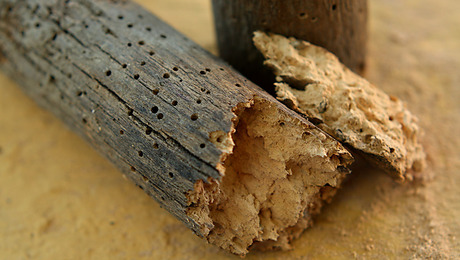I am constructing a log shelter next to my lake. The shelter is built using traditional log building techniques. The shelter will sit on six posts equally spaced 18′ x 24′. There will be three posts on the long side and two on the short side.
My concern is for the concrete pad it is going to be sitting on. The concrete pad is cut into the side of a hill approx 3 feet below grade. I dug a 8 inch footer all around and laid block up about 3 feet. I also dug 12 inch deep footers and 2 feet in diameter directly below where the post will sit. I laid a couple of inches of pea gravel on top of the area and poured four inches of concrete inside the block walls.
I will be installing the building in a couple of weeks and after thinking about it some more I am concerned that the concrete under the posts is not thick enough or ?. I do not want to get into a situation where I put up this building and then start getting radial cracks from around the posts. If I am going to have to cut and dig new footers under the posts I want to do it now.
I would estimate the entire building to weigh about 4-5k pounds minimum. I haven’t calculated exactly but will consist of about 380 linear feet of Southern Yellow Pine logs 6-10 inches in diameter plus purlins and steel roof.
Any other information you need to provide assistance in providing correct footers under posts would be appreciated.
Respectfully
chuck


















Replies
Chuck, I'm not quite clear on the system you're describing. Are you saying you have a 3' deep crawl space, and the structure sits on 6 posts on top of the crawlspace wall?
As for the weight of the structure, at an average weight of roughly 50 lb/sq.ft., and assuming you have an avarage of 8" logs, you have about 6600 lbs in just the structure itself plus another 20,000 to 50,000 lbs in live load and dead load for the roof and floor system. That's a total of say 55,000 for the structure. Soil can support at least 25 lbs/sq.in. generally. That means you need about 350 to 400 sq.in. under each point load (post), or about a 20 inch square.
I am not an engineer, and this is not to be taken as real engineering advice. If this was a house I'd say "see an engineer." But, for a rough structure, it sounds like you might be all set.
Mike
I am sorry about the confusion. No it is a slab on grade with concrete retaining wall around it. The structure is cut into the side of a hill so I put a 3 foot retaining wall around 3 sides. The fourth side is open to the lake. The posts sit on the slab on the ground which was dug 3 feet below hill grade. This is not a building that we will live in, just a building to party and consume adult beverages while enjoying the lake.
My concern is the point load of the posts sitting on the concrete.
Thank you
Chuckl
Chuck,
6 posts, 5K#, 3.1416 sqft footers. 265# sqft soil load.
Since you didn't even mention soil, I will 'azz you me' that you don't have any wierd soil conditions.
I see no problem.
Get up around 20K# (1K/sqft) and I would make sure you had good soil, but I still wouldn't be worried.
SYP = 3# board foot. 380' x 10"D = 2500#.
Check my math, I'm still BC after a bad night.
SamT
Chuck,
you are missing a couple of key issues here, first the concrete will absorb water. (that's it's nature) even really dry concrete will still suck water out of the ground and cause the logs to decay. the only way to correct that is to seperate the concrete from the logs. Depending on the durability you seek in this log building you will need some kind of vapor barrier. A few decades? sure you gould use a heavy plastic. longer? you should plan on using a multi layer system ie; 9 mil poly barrier followed by a .030 copper sheet. copper will eventually corrode with contact with cement, aluminum isn't durable enough and thus the sandwich of plastic to protect the copper and copper to protect the wood..
second you haven't addressed frost, frost will heave and toss any building around, if you build a floating slab the slab needs to be built strong enough to resist that heaving. If you don't live up here in Minnesota you won't have to go 50 inches down to prevent the frost from forming but that is a matter for your local officals to inform you about.. Find out what is called for in frost footings and design based on those requirements..
Frenchy,
Thanks for the idea with the copper sheet. I had planned on seperating the logs but was unsure of the technique I was going to use. I was thinking about using a disc of pressure treated plywood cut to the diameter of the log. Sounds like your idea is much better though.
As far as the frost line. Yes I did take that into consideration when I was construting the building. But my thought was since I had already dug down 3 feet to undisturbed solid soil that I would not have to dig the footer another 27 inches below that.
So the actual footer below the concrete is 12" and then another 4" of concrete on top of that.
Thanks,
chuck
>>But my thought was since I had already dug down 3 feet to undisturbed solid soil that I would not have to dig the footer another 27 inches below that.
>>So the actual footer below the concrete is 12" and then another 4" of concrete on top of that.
Your frost line is 27" below air level, which is the top of the slab. The bottom of your footing is 11" above the new frostline.
SamT
Chuck,
Did I read that the frost line is at 27 Inches? Then Unless I misread you you need to get below that to be below the frost point.. If you dug intyo the bank 3 feet it doesn't matter, your frost point is 27 inches below grade, whatever grade is..
Whew,.... I'm making this as clear as mud.. I'm assuming tis building will be unheated so the frost line will be 27 inches below the floor of the building. Is that clearer?
I guess I was thinking that since the whole concrete pad is floating that I could get by without going below the frostline. Am I correct that since the building will sit on the pad that it will not be floating now.
My main concern is the thickness of the concrete and its ability to support the weight of the building. I have already poured the pad and gotten through one winter without too much cracking. At least not that much for around here.
Chuck